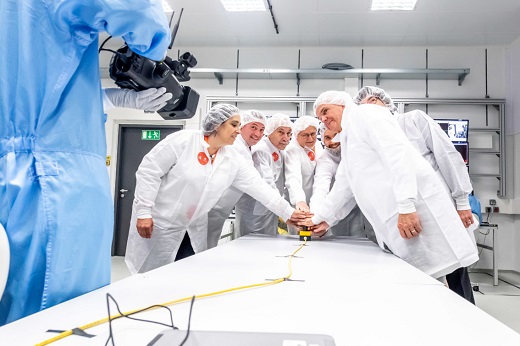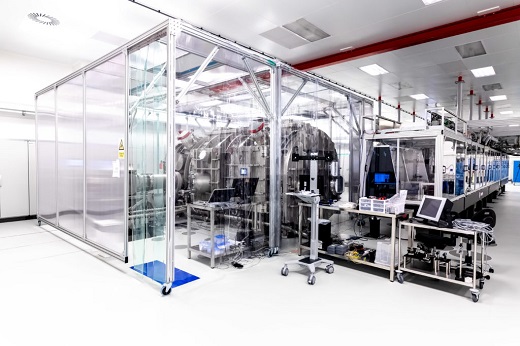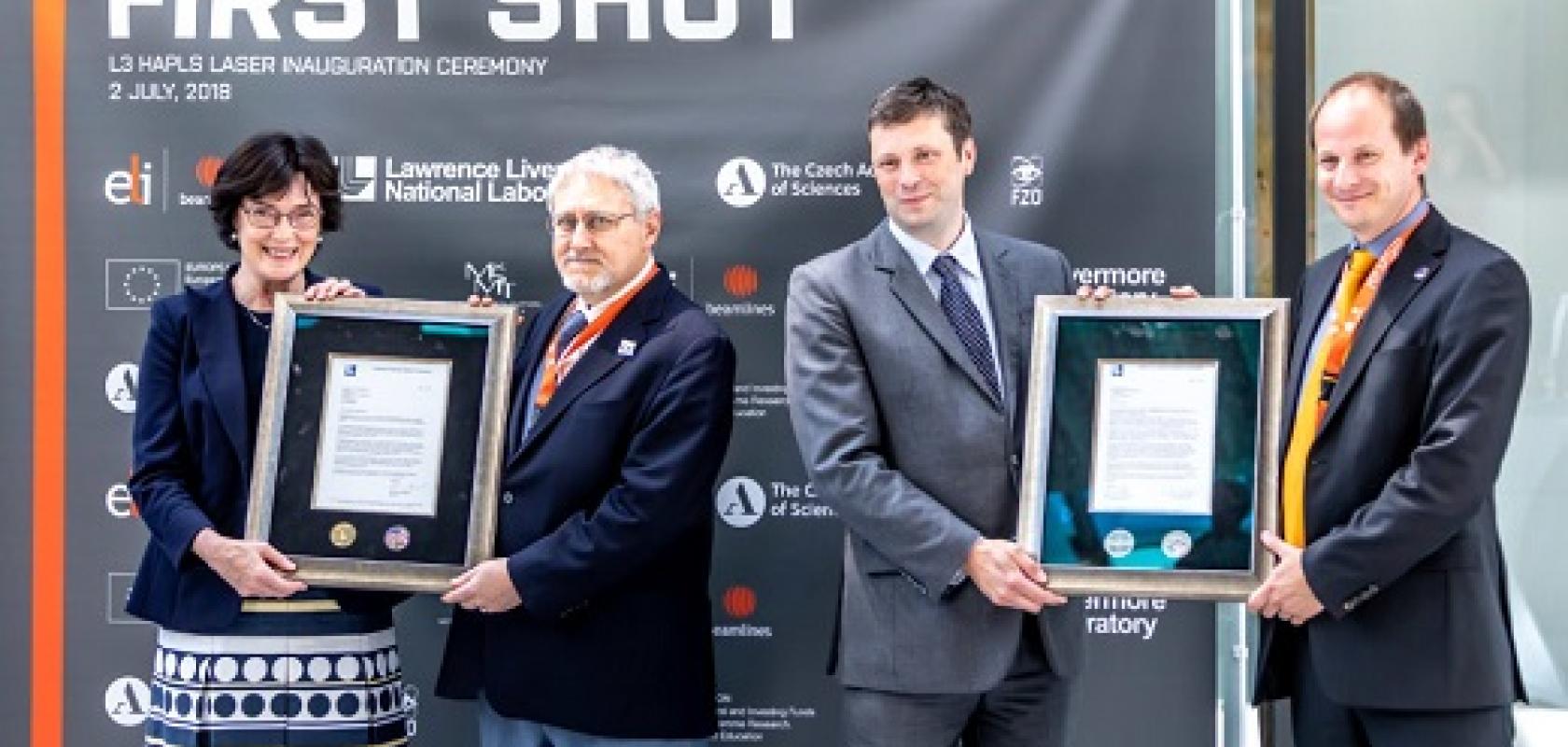After five years of development, the world’s most intense diode-pumped petawatt laser has been declared fully integrated and operational. It was fired for the first time at the ELI Beamlines research institute in Dolní Břežany, Czech Republic, on 2 July 2018.
The L3-HAPLS laser system, developed for ELI Beamlines as part of the Extreme Light Infrastructure (ELI) project, is the world’s largest petawatt laser system, and uses the world’s most powerful pulsed laser diodes. It will serve many areas of basic and applied research and is reported to be ready for experimentation.
Applications of the new system include the development of a compact laser particle accelerator for the generation of short-wave x-rays, which could be used for high spatial and temporal resolution microscopy for material and medical research. The initial experiments will be capable of taking images with resolution orders of magnitude better than what is seen in today’s hospitals.

The first shot ceremony of the L3 laser systems took place on 2 July at the ELI Beamlines research institute in Dolní Břežany, Czech Republic. (Image: ELI Beamlines)
L3-HAPLS was designed, developed and constructed at the Lawrence Livermore National Laboratory in California, it was delivered to ELI Beamlines in June 2017. By the end of 2017, four blocks of laser diode units – the most intense diode light sources ever produced – were launched to provide 800kW light pulses.
In Spring 2018 the main L3-HAPLS laser amplifier was put into operation, enabling the testing of the complete laser chain. The system has now been ramped to its first operation point of 16 joules and a 27-femtosecond pulse duration at a 3.3Hz repetition rate, equivalent to a peak power of approximately 0.5 petawatts after the pulse compressor. This operational point was established to learn and conduct the initial experiments at a moderate repetition rate.

The L3-HAPLS laser system was developed over five years and was delivered to ELI Beamlines in June 2017, (Image: ELI Beamlines).
The first shot ceremony on 2 July was attended by the Czech deputy minister for research and higher education Pavel Doleček, president of the Czech Academy of Sciences Eva Zažímalová, and representatives of the Institute of Physics, the ELI Delivery Consortium and the Lawrence Livermore National Laboratory.
‘I am very glad to meet at ELI Beamlines, which is, thanks to the installation of the laser system L3, the very first research infrastructure of worldwide importance built in Central-Eastern Europe,’ said Doleček. ‘I truly believe that this unique laser system will soon bring excellent results and attract more top researchers from the international science community to the Czech Republic.’
Related articles
A flash of life - Manufacturers are increasing the power and wavelength of ultrafast sources used in live tissue imaging to aid researchers, Matthew Dale finds
€4m, 5TW laser developed for Extreme Light Infrastructure project
University of Strathclyde acquires one of the world’s most powerful lasers


